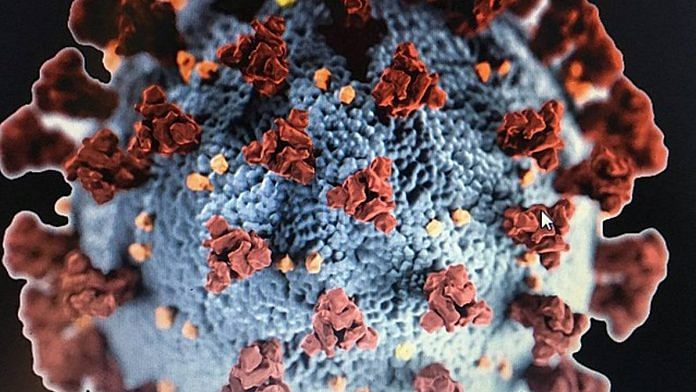New Delhi: Genomic sequencing of SARS-CoV-2 samples collected from Beijing during the recent outbreak suggests that no new Covid-19 variants emerged in China following the surge in infections in the country after it ended its zero-Covid policy, according to a study published in The Lancet journal.
The study, which analysed cases reported in Beijing, said two existing Omicron sub-variants, BA.5.2 and BF.7, accounted for more than 90 per cent of local infections between 14 November and 20 December, 2022.
China ended its zero-Covid policy on 7 December, 2022 after implementing strict Covid protocols for three years. These included targeted lockdowns, mass testing and quarantine. The abrupt lifting of restrictions led to a sudden surge in Covid cases in the country, overwhelming hospitals and infecting millions.
The research team from the Chinese Academy of Sciences collected samples from imported (from other countries) and local Covid-19 cases in Beijing, and randomly selected samples for analysis. There had been no persistent local transmissions reported in Beijing before December 2022.
Of the 2,881 high-quality sequences included in the study, 413 new samples were randomly selected and sequenced between 14 November, 2022 – when infections began to increase sharply – and 20 December, 2022. Of these, 350 were local cases and 63 were imported. Imported cases came from 63 countries and regions, the study said.
The analysis revealed that they all belonged to the existing Covid-19 strains.
The dominant strain in Beijing after November 14, 2022 was BF.7, which accounted for 75.7 per cent of the local infections. Another Omicron sub-variant, BA5.2, was responsible for 16.3 per cent of the local cases.
The number of both BA5.2 and BF.7 in Beijing increased after 14 November, 2022. The effective size of the BA.5.2 population did not change substantially between 14 November and 25 November, 2022, but increased sharply around 30 November, 2022. The rise coincided with an increased number of BA.5.2 infections reported around 30 November, 2022. The population of BF.7 increased gradually from 14 November, 2022.
Also Read: For these UPSC aspirants, Covid isn’t over. It killed their IAS dream, now a fight unending
Known variants caused surge
“Given the impact that variants have had on the course of the pandemic, it was important to investigate whether any new ones emerged following the recent changes to China’s COVID-19 prevention and control policies,” George Gao, a professor at the Institute of Microbiology at the Chinese Academy of Sciences, said in a statement.
“Our analysis suggests two known Omicron sub-variants – rather than any new variants – have chiefly been responsible for the current surge in Beijing, and likely China as a whole. However, with the ongoing large-scale circulation of COVID-19 in China, it is important we continue to monitor the situation closely so that any new variants that might emerge are found as early as possible,” Gao, also the lead author of the study, said.
Limitations to the study
The researchers only analysed data from 2022 (from mid-November to December) in Beijing. However, they claim that the data is representative of the country as a whole.
The number of laboratory-confirmed Covid-19 cases in December 2022 was unavailable because mandatory large-scale testing ended, suggesting that the true number of infections was underestimated.
This may have introduced a sampling bias in the dataset, and hence more sampling is required to study the transmissibility and pathogenicity of Omicron sub-variants, according to the study team.
The evolutionary rate of the virus was assumed to be constant during the initial stage of the outbreak, though it is possible this could vary depending on the variant.
“It is welcome to see this much-needed data from China. It is certainly reassuring that this study yielded no evidence for novel variants, but not a surprise: the surge is amply explained by the abrupt cessation of effective control measures,” Professor Wolfgang Preiser and Dr Tongai Maponga of the University of Stellenbosch, South Africa, who were not involved in the study, wrote in a linked commentary.
However, they urge caution in drawing conclusions about China as a whole based on data from Beijing.
“The SARS-CoV-2 molecular epidemiological profile in one region of a vast and densely populated country cannot be extrapolated to the entire country. In other regions of China other evolutionary dynamics might unfold, possibly including animal species that could become infected by human beings and “spill back” a further evolved virus,” they said.
Edited by Geethalakshmi Ramanathan
Also Read: China reports 60,000 Covid deaths since early Dec, study says toll might hit 1 million in 2023



